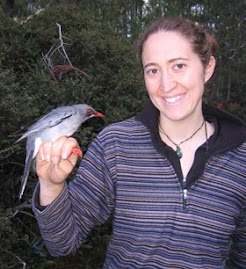 After that heavy intro, I am glad to say that the remainder of my trip in the Dominican Republic was successful. After taking the bus from the Haitian capital to Santo Domingo, we worked our way west along the coast to the Sierra de Bahoruco. We stopped in Oviedo at a friend's house for Christmas and had a stress-free day relaxing with friends. I enjoyed reviving my Spanish-speaking skills with the children and they enjoyed quizzing me on my vocabulary. It's very humbling to realize that a 7-year old has a better handle on the language than you do.
After that heavy intro, I am glad to say that the remainder of my trip in the Dominican Republic was successful. After taking the bus from the Haitian capital to Santo Domingo, we worked our way west along the coast to the Sierra de Bahoruco. We stopped in Oviedo at a friend's house for Christmas and had a stress-free day relaxing with friends. I enjoyed reviving my Spanish-speaking skills with the children and they enjoyed quizzing me on my vocabulary. It's very humbling to realize that a 7-year old has a better handle on the language than you do.Up in the mountains, we checked some swallow boxes in the abandoned Alcoa mines and then drove up to Loma del Toro, near the border with Haiti. We again were treated to hearing a Black-capped Petrel on the first night not far from the caseta. The next morning we awoke to the sound of a flock of Hispaniolan Crossbills overhead. The pine forest here is extensive and home to a solid population of crossbills, though I never saw one for more than 5 minutes at a stretch.
Jim rappelled down to a known petrel nest off th
 e cliff. There was no sign of nesting activity, but we didn't really expect any. Most of the birds are off at sea fattening up before breeding season in January. The vantage point allowed us to clearly see the environmental degradation in Haiti. The edge of the park was a solid line of trees that dropped away to barren agricultural land. And Haitian immigrants daily cross the border to attempt a subsistence living within the park.
e cliff. There was no sign of nesting activity, but we didn't really expect any. Most of the birds are off at sea fattening up before breeding season in January. The vantage point allowed us to clearly see the environmental degradation in Haiti. The edge of the park was a solid line of trees that dropped away to barren agricultural land. And Haitian immigrants daily cross the border to attempt a subsistence living within the park.We then returned to the capital for New Year's eve before heading to the Cordillera Central, where I had never visited. Most of Jim's swallow boxes are around Valle Nuevo. We put up 16 newly-made boxes around an abandoned agricultural field in the park. I had mostly recovered from a sprained wrist and numerous bruises from the Macaya expedition, but started suffering from a harsh cold. The park ranger, Angel, searched the fields nearby for some wild herbs with which to make a tea for me. It included a number of things I had never seen, and even had some Hispaniolan Pine needles which gave it a bitter piney aftertaste. It was quite tastey, however, and helped while I was taking it, but the cold returned upon getting off the plane in Denver and breathing in the dry, cold air.
 The last thing we did before we left was scout for crossbills at Pico Duarte. Pico Duarte is the tallest mountain in the Caribbean. It's customary to hire a mule to carry your gear and you must hire a guide to hike up to the summit. We found a guide that was recommended to us and convinced him to come up with us to Los Tablones, the lowest caseta on the mountain, for one night, while we packed in all our gear ourselves, complete with sideways glances from other guides and tourists. The forest was lush and provides excellent habitat for wildlife. We heard a Barn/Ashy-faced Owl at night and encountered a flock of Hispaniolan Trogons and White-winged Warblers the next morning on a bird walk. We didn't have enough time to get up very high, so we didn't get to pine-dominant forest to see crossbills. That I will keep for my next trip.....
The last thing we did before we left was scout for crossbills at Pico Duarte. Pico Duarte is the tallest mountain in the Caribbean. It's customary to hire a mule to carry your gear and you must hire a guide to hike up to the summit. We found a guide that was recommended to us and convinced him to come up with us to Los Tablones, the lowest caseta on the mountain, for one night, while we packed in all our gear ourselves, complete with sideways glances from other guides and tourists. The forest was lush and provides excellent habitat for wildlife. We heard a Barn/Ashy-faced Owl at night and encountered a flock of Hispaniolan Trogons and White-winged Warblers the next morning on a bird walk. We didn't have enough time to get up very high, so we didn't get to pine-dominant forest to see crossbills. That I will keep for my next trip.....To see photos with captions from the trip, check out my Picasa site.


No comments:
Post a Comment